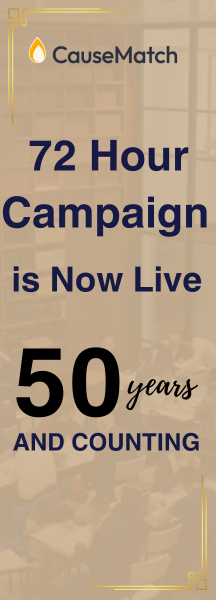Kiddush Levanah: Under the Light of the Silvery Moon (Part 8)
“My walk on the moon lasted three days. My walk with
Charles Duke – Lunar Module Pilot, Apollo 16
Kiddush Levanah then continues with the following sentence that is repeated three times: “May fear and terror befall them at the greatness of Your arm; may they be as still as stone.” (Shemot 15:16)
After just having declared that our enemies will not be able to harm us, we now pronounce that they will be filled with terror when they contemplate the Might of Hashem.
As Rashi explains, each nation fears the Jews for their own reason. Some have valid fears for their future as the Jewish nation begins its journey towards the Land of Israel. Others, such as Edom and Moav, have no reason whatsoever to fear the approach of the Jews or to harbor any hatred towards them. The land that they inhabited was not a part of the Land of Israel and they would neither be overrun nor exiled. Why then did they behave in the reprehensible way as they did? Because their hatred of the Jewish People Nation was so great that they could not tolerate the thought that the Jews would establish their own, independent kingdom, even if it had no direct impact on them at all. It seems that Edom and Moav are the prototypes of all Jew-hatred throughout history.
Eric Hoffer (1902-1983), an American writer and philosopher who was awarded the Presidential Medal of Freedom, summarized the irrational and innate hatred for the Jews in two short sentences: “The Jews are a peculiar people. Things permitted to other nations are forbidden to the Jews.” Or, in the words of an unattributed quotation, “An anti-Semite is someone who hates the Jews more than is necessary.”
Rabbi Shimshon Raphael Hirsch explains the difference between fear and terror. Fear is the dread of a superior force or power, whereas terror is the dread of a threatened danger. On being exposed to Hashem’s Might, the nations of the world will be filled with both fear and terror. Fear at the enormity of Hashem’s infinite power, and terror that it will be unleashed against them. So great will be their fear that the nations of the world will not be able to react in any way. They will be struck dumb.
Rabbi Yehudah HaLevi in his HaKuzari writes that despite the fact that fear has no physical source, it can cause a person to exhibit physical symptoms. Fear can make a person’s skin turn white or it can make the skin have goosebumps. Rabbi Yehudah HaLevi explains that this is due to fear being an expression of one’s spiritual essence.
However, fear is neither negative nor positive. As with virtually every emotion, it is not the emotion that defines whether it is good or bad but rather it is our reaction to the emotion. When utilized correctly, fear can drive a person forwards and draw them closer to Hashem. Rabbi Avraham Schorr, the rabbi of Congregation Nezer Gedalyahu in Flatbush and author of numerous scholarly works, said that a person can replace many fears with One fear – Yirat Hashem – the fear of Hashem.
The Sefat Emet cites our Sages teaching that Yitzchak’s face was always shining with joy. He was happy all his life and was therefore called Yitzchak, which shares the same root as the word for laughter. Paradoxically, Yitzchak was also renowned for his acute fear of Hashem. Yaakov actually refers to his father as “Pachad Yitzchak – the Dread of Yitzchak”. The Sefat Emet clarifies that fear is not contradictory to joy. “They actually go together, because no one is happier than the person who does not fear anyone other than Hashem.”
To be continued…







